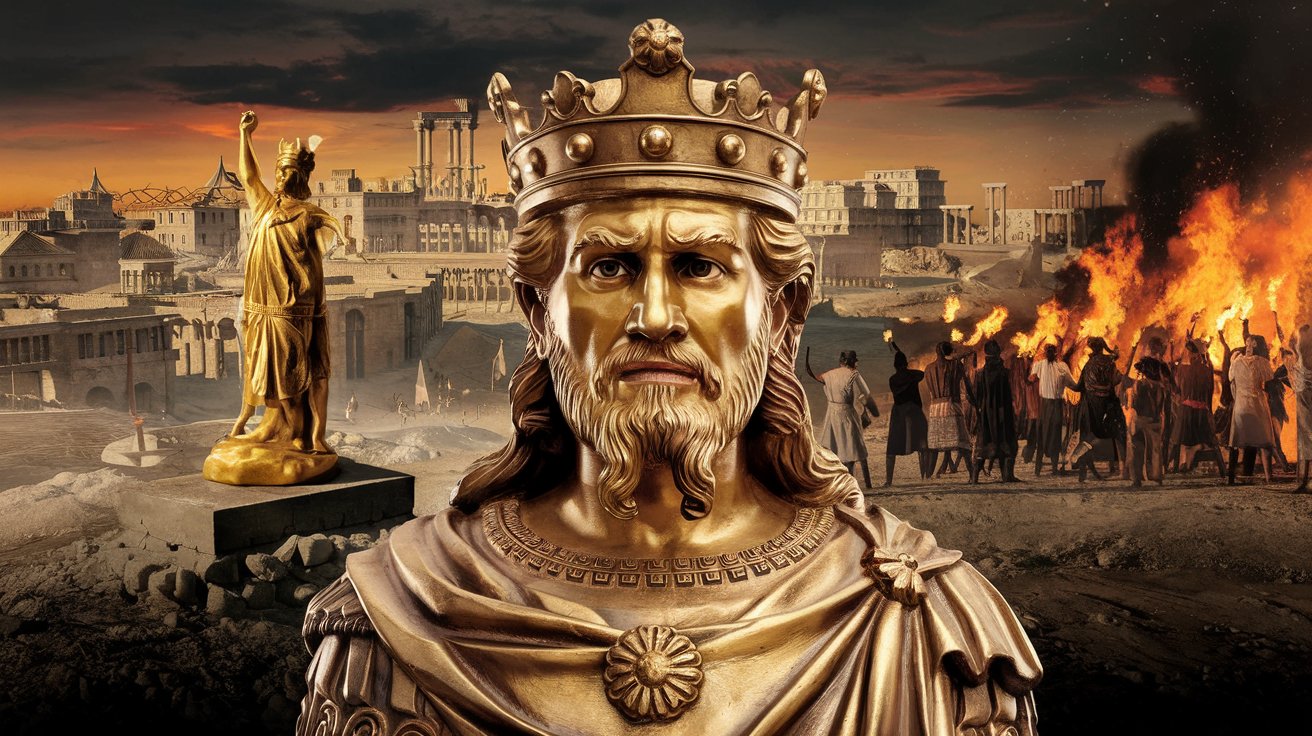
The Babylonian War with Elam was a series of intense conflicts that shaped the ancient Near East. Spanning several centuries, these wars saw the rise and fall of powerful empires, dramatic betrayals, and decisive battles. From the early skirmishes around 2700 BCE to the final conquest in 645 BCE, the clashes between Babylon and Elam were marked by shifting alliances, cultural exchanges, and significant political upheaval. The involvement of other major powers like Assyria added layers of complexity to these conflicts. Beyond the battlefield, the wars influenced art, trade, and governance, leaving a lasting legacy that continued to impact the region long after the final arrows were fired.
Key Takeaways:
- The Babylonian War with Elam, spanning centuries, shaped the ancient Near East through key battles, cultural impact, and prophecies, ultimately influencing the rise of the Persian Empire and the decline of Assyria.
- Elam's strategic location and trade influence made it a vital hub in ancient trade networks, impacting the region's economy and leaving a lasting legacy through its assimilation into the Persian empires.
The Timeline of Conflicts
The Babylonian War with Elam spanned several centuries, involving numerous battles and shifting alliances. This long history shaped the ancient Near East in profound ways.
- The wars between Babylon and Elam began around 2700 BCE, with conflicts continuing until the 6th century BCE.
- The first recorded war between Elam and Sumer occurred around 2700 BCE, initiated by the Sumerian king Enmebaragesi of Kish.
Cultural and Political Dynamics
The cultural and political landscape of the Babylonian and Elamite empires was complex and ever-changing, influenced by art, dynastic struggles, and alliances.
- Early Elamite artwork is unique, often featuring animals as the central focus, unlike other civilizations that prioritized human figures.
- The Elamites founded their own dynasty at Larsa and later ruled over Uruk and Babylon.
- Hammurabi of Babylon initially allied with the Elamites but later betrayed them, leading to significant conflict.
- The Assyrian Empire, under Ashurbanipal, played a crucial role in the final stages of the Babylonian War with Elam.
Key Battles and Military Campaigns
Several key battles and military campaigns defined the Babylonian War with Elam, each with significant consequences for both empires.
- The Battle of Halule in 691 BCE saw the Assyrian king Sennacherib defeat the Elamite army.
- The Elamite royal family faced internal struggles, leading to external conflicts, such as the succession of Urtaku by his brother Teumann.
- When Teumann invaded Babylonia in 653 BCE, Ashurbanipal mobilized the Assyrian army, leading to a decisive battle at the Ulai River.
- The Assyrian victory at the Ulai River resulted in the defeat of Teumann and the submission of Elam to Assyria.
- In 645 BCE, Ashurbanipal obliterated Elam, leveling the capital Susa and devastating the region.
Cultural Impact and Legacy
The destruction of Elam had lasting cultural implications, influencing subsequent civilizations and leaving a rich historical legacy.
- The unique Elamite art and culture were lost, diminishing their influence on later civilizations.
- The void left by Elam's destruction was filled by vigorous Iranian tribes from the north, leading to the rise of the Persian Empire.
- The Assyrian Empire began to decline after the conquest of Elam, eventually falling to a coalition of Median, Babylonian, and Scythian forces in 612 BCE.
- After the fall of Assyria, Elam became part of the Median Empire, later incorporated into the Achaemenid Empire under Cyrus the Great.
- The Achaemenid Empire preserved many Elamite cultural practices and values, ensuring their continued influence.
Prophecies and Succession
Prophecies and the succession of Elamite kings played a significant role in the region's history, shaping the course of events.
- The prophet Ezekiel described the fall of Elam in 587 BCE, prophesying that Elam would bear its shame with those who go down to the Pit.
- The successors of the Elamite kings bore simple titles and no honorifics, with the final king, Tempti-Khumma-In-Shushinak, using no honorific at all.
Trade and Economic Influence
Elam's strategic location and control over trade routes made it a vital hub in ancient trade networks, influencing the region's economy.
- In 540 BCE, Achaemenid rule began in Susa, marking the end of Elamite independence.
- The Elamite language remains not fully deciphered, limiting our understanding of their written history.
- Despite their eventual assimilation, the Elamites made significant contributions to the culture of the region, influencing art, architecture, and governance.
- Elam controlled the flow of Iranian tin to the west, crucial for bronze production, making it a vital hub in ancient trade networks.
- Elam's close contact with Dilmun in the Persian Gulf may have given them monopolistic access to other foreign resources and trade routes.
Assimilation and Legacy
The Elamites' assimilation into the Persian empires ensured the preservation of their culture and heritage, leaving a lasting legacy.
- The Elamites were conquered many times but persevered in maintaining their culture and heritage.
- The legacy of Elam extends beyond their military conflicts and cultural contributions, playing a central role in the Near East's history between 2700 BCE and 224 CE.
The Lasting Impact of the Babylonian-Elamite Wars
The Babylonian War with Elam wasn't just a series of battles; it shaped the ancient Near East in profound ways. From the early conflicts around 2700 BCE to the final conquest in 645 BCE, these wars influenced the region's political landscape, cultural exchanges, and trade routes. The Elamites, despite their eventual defeat, left a lasting legacy through their unique art, language, and contributions to bronze production. Their interactions with powerful neighbors like Assyria and Babylon set the stage for the rise of the Persian Empire. Even after their fall, Elamite culture persisted, influencing the Achaemenid Empire and beyond. The wars between Babylon and Elam remind us of the complex interplay of power, culture, and history that continues to fascinate scholars and history buffs alike.
Frequently Asked Questions
Was this page helpful?
Our commitment to delivering trustworthy and engaging content is at the heart of what we do. Each fact on our site is contributed by real users like you, bringing a wealth of diverse insights and information. To ensure the highest standards of accuracy and reliability, our dedicated editors meticulously review each submission. This process guarantees that the facts we share are not only fascinating but also credible. Trust in our commitment to quality and authenticity as you explore and learn with us.


